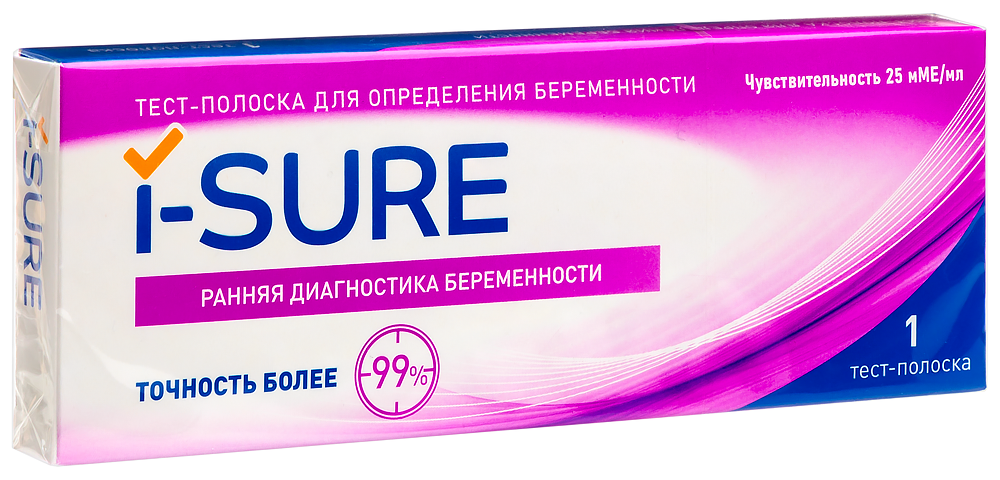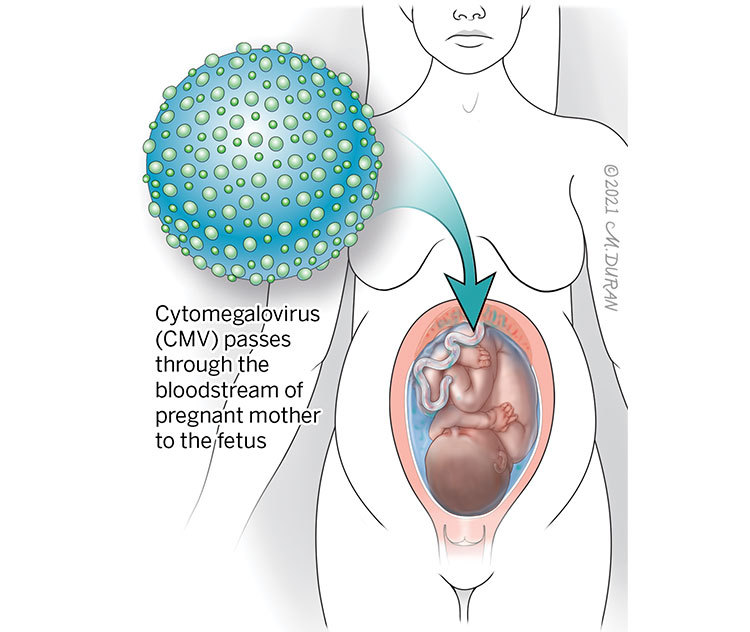Methergine for pregnancy. Methylergonovine (Methergine) in Pregnancy: Uses, Safety, and Side Effects
What is methylergonovine used for during pregnancy. How does methylergonovine work to prevent postpartum hemorrhage. Is methylergonovine safe to take while pregnant or breastfeeding. What are the potential side effects of methylergonovine after childbirth.
What is Methylergonovine and How Does it Work?
Methylergonovine, also known by the brand name Methergine, is a medication that belongs to a class of drugs called ergot alkaloids. Its primary use is to prevent or treat uterine bleeding that can occur after childbirth or abortion. But how exactly does it work?
Methylergonovine acts by stimulating contractions of the uterine smooth muscle. This helps the uterus return to its pre-pregnancy size and shape through a process called involution. By promoting uterine contractions, methylergonovine also constricts blood vessels in the uterus, which can help reduce excessive bleeding.
Key Points About Methylergonovine:
- Drug class: Ergot alkaloid
- Primary use: Prevent or treat postpartum hemorrhage
- Mechanism: Stimulates uterine contractions
- Helps with: Uterine involution and blood vessel constriction
When is Methylergonovine Prescribed During Pregnancy?
Methylergonovine is not typically used during pregnancy itself. Its main application is in the postpartum period or after an abortion. However, in some cases, it may be administered during the second stage of labor under close medical supervision.

The most common scenarios for methylergonovine use include:
- Immediately after delivery of the placenta to prevent excessive bleeding
- To treat postpartum hemorrhage if it occurs
- After an abortion to reduce the risk of heavy bleeding
- In rare cases, during the second stage of labor after delivery of the anterior shoulder
It’s crucial to note that methylergonovine should only be used under the direct supervision of a healthcare provider, especially when administered during labor or delivery.
Safety Considerations for Methylergonovine Use in Pregnancy
Is methylergonovine safe to use during pregnancy? This is a complex question without a simple answer. The U.S. Food and Drug Administration (FDA) classifies methylergonovine as a Pregnancy Category C drug. This means that:
- Animal studies have shown adverse effects on the fetus
- There are no adequate and well-controlled studies in pregnant women
- The potential benefits may warrant use of the drug in pregnant women despite potential risks
Given these considerations, healthcare providers must carefully weigh the potential benefits against the risks when considering methylergonovine use in pregnant women. The decision to use this medication should be made on a case-by-case basis, taking into account the individual patient’s circumstances and medical history.

Potential Side Effects and Risks of Methylergonovine
Like all medications, methylergonovine can cause side effects. Some are relatively mild, while others can be more serious. It’s important for patients and healthcare providers to be aware of these potential effects.
Common Side Effects:
- Upset stomach
- Vomiting
- Diarrhea
- Headache
- Unpleasant taste in the mouth
Serious Side Effects:
While less common, the following side effects require immediate medical attention:
- Seizures
- Chest pain
- Rapid heartbeat
- Difficulty breathing
- Severe dizziness
- Tinnitus (ringing in the ears)
- Leg cramps
- Skin rash
If any of these serious side effects occur, it’s crucial to contact a healthcare provider immediately. In some cases, these could be signs of a severe allergic reaction or other serious medical condition.
Methylergonovine and Breastfeeding: What You Need to Know
Can methylergonovine be used while breastfeeding? This is an important consideration for many new mothers. While the drug can pass into breast milk, its effects on nursing infants are not well-studied.

Current guidelines suggest that:
- Short-term use of methylergonovine is generally considered compatible with breastfeeding
- Long-term use may potentially decrease milk production
- Infants should be monitored for side effects such as vomiting, diarrhea, or weak pulse
As always, the decision to use methylergonovine while breastfeeding should be made in consultation with a healthcare provider. They can help weigh the potential risks and benefits based on the individual situation.
Proper Administration and Dosage of Methylergonovine
How is methylergonovine typically administered? The medication comes in various forms, including oral tablets and injectable solutions. The specific dosage and administration method will depend on the individual patient and the reason for use.
Oral Administration:
- Usually prescribed as tablets to be taken 3-4 times daily
- Typical dosage is 0.2 mg per tablet
- Course of treatment usually lasts for 2-7 days
Injectable Administration:
- Given intramuscularly or intravenously in hospital settings
- Dosage varies based on the specific situation and patient response
- Typically administered by healthcare professionals
It’s crucial to follow the prescribed dosage and administration instructions carefully. Taking more than the recommended amount can increase the risk of side effects and potential complications.

Interactions and Precautions with Methylergonovine
Methylergonovine can interact with other medications and medical conditions. It’s essential to inform your healthcare provider about all medications you’re taking, including over-the-counter drugs and supplements.
Potential Drug Interactions:
- Other ergot alkaloids (e.g., Cafergot, Ergostat)
- CYP3A4 inhibitors (e.g., certain antibiotics, antifungals)
- Vasoconstrictors
- Beta-blockers
Medical Conditions to Consider:
Methylergonovine should be used with caution in patients with:
- Hypertension (high blood pressure)
- Cardiovascular disease
- Liver or kidney disease
- History of seizures
These precautions underscore the importance of a thorough medical history and open communication between patients and healthcare providers when considering methylergonovine use.
Alternatives to Methylergonovine for Postpartum Care
While methylergonovine is an effective medication for preventing and treating postpartum hemorrhage, it’s not the only option available. Healthcare providers may consider alternative treatments based on individual patient needs and risk factors.

Other Medications for Postpartum Hemorrhage:
- Oxytocin: Often used as a first-line treatment
- Misoprostol: Can be administered orally or rectally
- Carboprost: Another ergot alkaloid, used in cases where other treatments have failed
Non-Pharmacological Approaches:
In addition to medication, other techniques may be employed to manage postpartum bleeding:
- Uterine massage
- Bimanual compression
- Balloon tamponade
- Uterine artery embolization (in severe cases)
The choice of treatment will depend on various factors, including the severity of bleeding, the patient’s medical history, and the availability of different interventions.
In conclusion, methylergonovine plays a crucial role in managing postpartum hemorrhage, but its use requires careful consideration of potential risks and benefits. Healthcare providers must weigh these factors alongside individual patient characteristics to determine the most appropriate course of treatment. As with any medication, open communication between patients and healthcare providers is key to ensuring safe and effective use of methylergonovine in the context of pregnancy and postpartum care.

Methylergonovine: MedlinePlus Drug Information
pronounced as (meth il er goe noe’ veen)
To use the sharing features on this page, please enable JavaScript.
Methylergonovine belongs to a class of drugs called ergot alkaloids. Methylergonovine is used to prevent or treat bleeding from the uterus that can happen after childbirth or an abortion.
This medication is sometimes prescribed for other uses; ask your doctor or pharmacist for more information.
Methylergonovine comes as a tablet to take by mouth three or four times a day. Follow the directions on your prescription label carefully, and ask your doctor or pharmacist to explain any part you do not understand. Take methylergonovine exactly as directed. Do not take more or less of it or take it more often than prescribed by your doctor.
Follow the directions on your prescription label carefully, and ask your doctor or pharmacist to explain any part you do not understand. Take methylergonovine exactly as directed. Do not take more or less of it or take it more often than prescribed by your doctor.
Before taking methylergonovine,
- tell your doctor and pharmacist if you are allergic to methylergonovine, other ergot alkaloids (Cafergot, Ergostat, Bellergal), or any other drugs.
- tell your doctor and pharmacist what prescription and nonprescription medications you are taking, especially other ergot alkaloids and vitamins.
- tell your doctor if you have or have ever had high blood pressure or blood vessel, heart, kidney, or liver disease.
- tell your doctor if you are pregnant, plan to become pregnant, or are breast-feeding. If you become pregnant while taking methylergonovine, call your doctor.
Take the missed dose as soon as you remember it. However, if it is almost time for your next dose, skip the missed dose and continue your dosing schedule. Do not take a double dose to make up for a missed one.
Do not take a double dose to make up for a missed one.
Methylergonovine may cause side effects. Tell your doctor if any of these symptoms are severe or do not go away:
- upset stomach
- vomiting
- diarrhea
- headache
- bad taste in mouth
If you experience any of the following symptoms, call your doctor immediately:
- seizures
- chest pain
- fast heartbeat
- difficulty breathing
- dizziness
- ringing in the ears
- leg cramps
- skin rash
If you experience a serious side effect, you or your doctor may send a report to the Food and Drug Administration’s (FDA) MedWatch Adverse Event Reporting program online (http://www.fda.gov/Safety/MedWatch) or by phone (1-800-332-1088).
Keep this medication in the container it came in, tightly closed, and out of reach of children. Store it at room temperature, away from light and excess heat and moisture (not in the bathroom).
Unneeded medications should be disposed of in special ways to ensure that pets, children, and other people cannot consume them. However, you should not flush this medication down the toilet. Instead, the best way to dispose of your medication is through a medicine take-back program. Talk to your pharmacist or contact your local garbage/recycling department to learn about take-back programs in your community. See the FDA’s Safe Disposal of Medicines website (http://goo.gl/c4Rm4p) for more information if you do not have access to a take-back program.
It is important to keep all medication out of sight and reach of children as many containers (such as weekly pill minders and those for eye drops, creams, patches, and inhalers) are not child-resistant and young children can open them easily. To protect young children from poisoning, always lock safety caps and immediately place the medication in a safe location – one that is up and away and out of their sight and reach. http://www. upandaway.org
upandaway.org
In case of overdose, call the poison control helpline at 1-800-222-1222. Information is also available online at https://www.poisonhelp.org/help. If the victim has collapsed, had a seizure, has trouble breathing, or can’t be awakened, immediately call emergency services at 911.
- Methergine®
- Methylergometrine
Last Revised – 01/15/2018
Browse Drugs and Medicines
Methylergonovine (Methergine) Use During Pregnancy
Save
Medically reviewed by Drugs.com. Last updated on Apr 14, 2022.
Methylergonovine is also known as: Methergine
Methylergonovine Pregnancy Warnings
Animal studies have not been conducted. During labor and delivery, this drug is utilized after delivery to assist involution and decrease hemorrhage. Under full obstetric supervision, this drug may be given in the second stage of labor following delivery of the anterior shoulder. There are no controlled data in human pregnancy.
US FDA pregnancy category C: Animal reproduction studies have shown an adverse effect on the fetus and there are no adequate and well-controlled studies in humans, but potential benefits may warrant use of the drug in pregnant women despite potential risks.
Use is contraindicated
US FDA pregnancy category: C
Comments: This drug is contraindicated during pregnancy because of its uterotonic effects.
See references
Methylergonovine Breastfeeding Warnings
Use of this drug during the colostral phase of lactation is not expected to transfer appreciable amounts of drug to the breastfed infant. According to the manufacturer, there are isolated reports of adverse effects in breast-fed infants whose mothers received this drug for several days including elevated blood pressure, bradycardia, tachycardia, vomiting, diarrhea, restlessness, or clonic cramps. A case-control study has shown a lack of infant side effects. Other studies have shown decreased serum prolactin, milk production, and duration of lactation, especially when used in the immediate postpartum period (effects appear dose-related and more impactful with injected doses than oral). A short course immediately postpartum does not appear to have a detrimental effect on lactation, however, longer courses are best avoided in mothers who wish to breastfeed. If adverse reactions, such as tachycardia, vomiting, diarrhea and agitation are observed in a breastfed infant, this drug should be discontinued.
A short course immediately postpartum does not appear to have a detrimental effect on lactation, however, longer courses are best avoided in mothers who wish to breastfeed. If adverse reactions, such as tachycardia, vomiting, diarrhea and agitation are observed in a breastfed infant, this drug should be discontinued.
Breastfeeding is not recommended during use of this drug
Excreted into human milk: Yes
Comments:
-Breastfeeding should be avoided for 12 hours following last dose; milk secreted during this period should be discarded.
See references
See also
- Methylergonovine use while Breastfeeding (in more detail)
- methylergonovine oral and injection Consumer Information
- Pregnancy Support Group
- FDA Pregnancy Categories
- Medicine use during Pregnancy
- Medicine use while Breastfeeding
- Safe Medications during Breastfeeding
References for pregnancy information
- “Product Information.
 Methergine (methylergonovine).” Novartis Pharmaceuticals (2010):
Methergine (methylergonovine).” Novartis Pharmaceuticals (2010):
References for breastfeeding information
- “Product Information. Methergine (methylergonovine).” Novartis Pharmaceuticals (2010):
- United States National Library of Medicine “Toxnet. Toxicology Data Network. http://toxnet.nlm.nih.gov/cgi-bin/sis/htmlgen?LACT” (2013):
Further information
Always consult your healthcare provider to ensure the information displayed on this page applies to your personal circumstances.
Medical Disclaimer
Permethrin – description of the substance, pharmacology, use, contraindications, formula
Contents
Structural formula
Russian name
English name
Latin name
chemical name
Gross formula
Pharmacological group of the substance Permethrin
Nosological classification
CAS code
pharmachologic effect
Characteristic
Pharmacology
Application of the substance Permethrin
Contraindications
Application restrictions
Use during pregnancy and lactation
Side effects of Permethrin
Overdose
Dosage and administration
Precautionary measures
special instructions
Trade names with the active substance Permethrin
Structural formula
Russian name
Permethrin
English name
Permethrin
Latin name
Permethrinum ( born Permethrini)
Chemical name
3-(2,2-dichorethenyl)-2,2-dimethylcyclopropanecarboxylic acid (3-phenoxyphenyl)methyl ester; mixture of cis- and trans-isomers (1:3)
Gross formula
C 21 H 20 Cl 2 O 3
Farmak logical group of the substance Permethrin
Antiparasitics
Nosological classification
ICD-10 code list
B85 Pediculosis and phthyriasis
B86 Scabies
CAS code
52645-53-1
Pharmacological activity
Pharmacological activity –
acaricidal , insecticidal , anti-pediculosis .
Description
Belongs to the group of pyrethrins (pyrethroids). Yellow-orange-brown low-melting solid or viscous liquid.
Pharmacology
The action is caused by a violation of the ion permeability of sodium channels and inhibition of the processes of polarization (repolarization) of the membrane of nerve cells of lice, fleas, ticks (including scabies) and other ectoparasites of the arthropod family, which leads to a paralyzing effect.
After skin application, absorption is not more than 2%. The part of the substance that has entered the systemic circulation is rapidly hydrolyzed to inactive metabolites, which are excreted mainly in the urine. With a single treatment of surfaces affected by pediculosis, the anti-pediculosis effect lasts from 2–3 to 6 weeks (depending on the dosage form used). Effective as an anti-scabies agent.
Application of the substance Permethrin
Pediculosis of the scalp, pubic pediculosis (including nit-carrying), scabies.
Contraindications
Hypersensitivity (including to other synthetic pyrethroids, chrysanthemums and other plants containing pyrethrins), lactation (in the treatment of scabies), children under 1 year (for emulsion), up to 6 months (for cream) ).
Restrictions for use
Skin diseases, pregnancy, children under 5 years of age.
Use during pregnancy and lactation
During pregnancy, it is possible if the expected effect of therapy outweighs the potential risk to the fetus (adequate and well-controlled studies of the safety of use in pregnant women have not been conducted).
Category of action on the fetus according to the FDA – B.
Side effects of the substance Permethrin
Local reactions – burning sensation, tingling or tingling, skin numbness, increased itching, erythema, allergic reactions (skin rashes, swelling).
Overdose
If swallowed, gastric lavage and symptomatic treatment are necessary.
Dosage and administration
Externally. In case of pediculosis – 1% cream or 0.5% lotion with a cotton swab is evenly applied to moistened hair of the head or hairy parts of the body (with pubic pediculosis), rubbing into the hair roots (the head can be covered with a scarf), left for 10 (1% cream) or 40 minutes (0.5% lotion), then thoroughly rinse with warm running water with soap or shampoo and dry in the usual way. The hair is combed with a fine comb to remove nits and dead lice; if live lice are found, the treatment is repeated after 7 days. If there is a risk of re-infection in the team – after washing the head, the drug is moistened (or carefully wiped) on the scalp and wait until the hair is dry (do not wash or wipe). The drug applied to the hair retains its activity for approximately 2 weeks (does not allow lice to multiply again on the hair). For scabies, a solution is used in the form of a freshly prepared 0.4% aqueous emulsion, which is carefully rubbed once a day (at night) into the skin of the upper extremities, trunk, and then the lower extremities for 3 consecutive days.:max_bytes(150000):strip_icc()/what-medications-may-treat-migraines-in-pregnancy-1719866-01-5c93dc1bc9e77c00015f6999.png) The skin of the face and neck, as well as the scalp, are not subject to treatment. On the fourth day, the patient must take a shower and change underwear and bed linen.
The skin of the face and neck, as well as the scalp, are not subject to treatment. On the fourth day, the patient must take a shower and change underwear and bed linen.
Precautions
Avoid contact with the mucous membranes of the eyes, nose, mouth, external genital organs (if this happens, the mucous membranes are washed with plenty of running water). Medical personnel are advised to wear rubber gloves. After the procedure, wash your hands thoroughly with soap. Procedures should be carried out in a well-ventilated area. With the simultaneous use of other drugs or the presence of concomitant diseases of the skin of the scalp, a mandatory consultation with a doctor is required before starting treatment. If itching persists for more than 4 weeks after treatment for scabies, a doctor’s consultation is mandatory. The occurrence of hypersensitivity reactions requires discontinuation of treatment.
Special instructions
To kill body lice, the contents of the bottle (24 ml) are diluted in 96 ml of water, underwear and bed linen are soaked in the resulting emulsion for 40 minutes.
Trade names with active ingredient Permethrin
Reset filters
Lek. form
All lek. forms concentrate for emulsifying for external use substance
Dosage
All dosages 5% No dosage
Manufacturer
Fox and Co. NPC
from bedbugs, cockroaches, ticks, instructions for use, description and principle of action
Cypermethrin is the second generation of insecticide. Active substance from the class of pyrethroids. The most common concentration in the composition of insecticides is Cypermethrin 25%. It is used for preventive treatment of premises from insects such as midges, mosquitoes, ticks, cockroaches, bedbugs. Scope of application: houses, apartments, production areas, offices. Cypermethrin is FDA approved. Approved for household treatments.
Buy Cypermethrin 25%
Description of Cypermethrin and its characteristics
Cypermethrin 25 kills ticks, midges, mosquitoes, cockroaches, bugs, ants and other insects. Treatments are effective against adults and larvae, but do not work on pests in the egg phase. Cypermethrin 25 can be used to control populations of insects resistant to OPs, Neonicotinoids, Carbamates.
Treatments are effective against adults and larvae, but do not work on pests in the egg phase. Cypermethrin 25 can be used to control populations of insects resistant to OPs, Neonicotinoids, Carbamates.
Cypermethrin 25’s UV resistance makes it suitable for use in exposed areas. Contact with water leads to a slight loss of the properties of the active substance.
Cypermethrin against ticks, midges, cockroaches, mosquitoes does not leave stains and streaks on furniture and floor coverings even after repeated spraying. It has a specific smell, provokes tickling and coughing, which completely disappear after 2-4 hours after drying and airing the room.
Advantages of cypermethrin 25 against ticks, midges, cockroaches, mosquitoes:
- low cost;
- economical consumption;
- acts quickly on insects;
- is safe for people and animals;
- is easy to use;
- is effortless to rinse off.
After contact with cypermethrin, the insect dies after 2-6 hours. The drug blocks the actions of the nervous system, prevents the normal transmission of impulses, and after a few hours the pest dies of paralysis.
The drug blocks the actions of the nervous system, prevents the normal transmission of impulses, and after a few hours the pest dies of paralysis.
The effect of cypermethrin lasts for two to six weeks, after which it can be re-sprayed.
Cypermethrin 25 against ticks, midges, cockroaches, mosquitoes assigned hazard class 3. When applying, it is necessary to observe safety precautions – use personal protective equipment. It is forbidden to come into contact with the drug to minors, as well as women during the period of gestation and breastfeeding. If cypermethrin provoked an allergic reaction, you should immediately consult a doctor.
Precautions.
Cypermethrin 25 against ticks, midges, cockroaches, mosquitoes should not be used in the presence of unauthorized persons, children, pets, including birds and fish. Windows must be open while spraying. Food products and utensils are taken out of the house (for example, to neighbors) or carefully covered. In industrial workshops, products that can absorb cypermethrin solution are removed or covered.
At the end of spraying, the rooms are ventilated for at least half an hour. Children’s and food establishments are processed on sanitary or weekend days. After disinfestation, the cypermethrin emulsion is washed off the surfaces with clean water with the addition of soap and soda.
Treated premises must not be used until wet cleaning is carried out, which must be carried out at least three hours before the object is used for its intended purpose. Use gloves while cleaning.
When working with the product, personal protective equipment (PPE) is used: a dressing gown or overalls with a hood, gloves, sealed goggles, a reusable mask in the form of a universal respirator with a gas mask cartridge brand “A”. After working with cypermethrin, the overalls are shaken out on the street and washed with a preliminary two-hour decontamination in a hot soapy-soda solution.
Do not smoke, eat or drink while handling cypermethrin solution. After the procedure, rinse your mouth, wash your hands and face with soap.
Instructions for use
Cypermethrin 25 against ticks, midges, cockroaches, mosquitoes should be diluted with clean water + 20 … + 25 ° С, strictly observing the proportions recommended by the instructions. The mixture is stirred until a homogeneous solution is obtained. The composition is used within 6-8 hours after mixing. It is impossible to store a solution of cypermethrin for a longer time. The product remaining after processing is disposed of in accordance with safety regulations.
Consumption of Cypermethrin 25 against ticks, midges, cockroaches, mosquitoes: 2.5-12.5 ml per 1 liter. water. The concentration is selected taking into account the type of insect, the number of individuals, the degree of infection.
Dosage of Cypermethrin 25 against ticks, midges, cockroaches, mosquitoes, for the preparation of a solution
The solution is sprayed with a pump sprayer or atomizer. The consumption of the working emulsion of cypermethrin is 50 ml/1 m2 on non-absorbent surfaces and 100 ml/1 m2 on absorbent ones. Re-treatment can be carried out after at least two weeks.
Re-treatment can be carried out after at least two weeks.
How to process
Hide food and personal items before disinfection. Keep children and pets away from the treated area to avoid direct contact with the drug.
Spray cypermethrin on surfaces of midges, mosquitoes, ticks, cockroaches. Pay special attention to areas such as baseboards, behind furniture, behind a bathroom screen, under a washing machine. After applying the solution, close all rooms in which pest control was carried out for 4-6 hours. After the specified time, ventilate the treated rooms and wipe the surfaces with soap and water. To get the greatest effect, the premises can be left closed for up to three days. In this case, the procedure is repeated only after 2-4 weeks.
Treatment with Cypermethrin 25 against cockroaches
A 0.1% solution of cypermethrin is used to kill cockroaches. Spray the product on the places of detection, localization and movement paths of arthropods. especially carefully treat hard-to-reach places: holes, cracks in the walls, door frames, thresholds, along baseboards, facings, ventilation vents, junctions of pipes of water supply, heating, sewer systems.
Processing is carried out simultaneously in all rooms in which cockroaches are found. If insect numbers are high, spray cypermethrin in adjacent areas to prevent migration and subsequent colonization by cockroaches.
Treatment with Cypermethrin 25 against mosquitoes and midges
Adults of midges and mosquitoes are killed with a 0.025% solution of cypermethrin. The emulsion is applied to the landing sites of insects, as well as the internal and external walls of buildings, the fences of garbage cans, where midges and mosquitoes take refuge in the heat.
Midge and mosquito larvae are treated with a 0.01% solution of cypermethrin. Irrigation sites: urban and natural reservoirs of non-fishery significance, basements of residential buildings, sewage, fire tanks.
Product consumption – 100 ml per 1 m2 of water surface. The frequency of treatment with cypermethrin is no more than once a month.
Treatment with Cypermethrin 25 against ticks
Prior to the application of cypermethrin, the territory is cleaned:
- grass is mowed and removed from the site or dry last year’s grass is removed;
- dry trimmings of trunks and branches of trees, bushes (if any) are removed.


 Methergine (methylergonovine).” Novartis Pharmaceuticals (2010):
Methergine (methylergonovine).” Novartis Pharmaceuticals (2010):